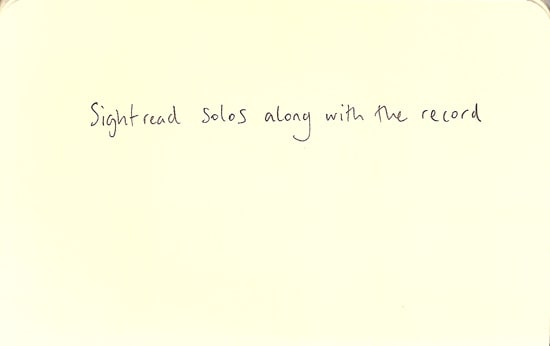There are obvious things one needs to do in order to improve one’s sight-reading: learn the notes on the fretboard, have an understanding of keys, major and minor scales, an understanding of notation and so on. But the thing you most need is the pressure of having to get it right first time. That’s what tells you what you need to work on. I don’t mean pressure in a negative way though. Just the experience of starting and carrying on. It’s a nice feeling when you’re reading along with other people and everything’s going as it should.
The next best thing I’ve found to that is to try to sight-read things along with a recording. It’s no use stopping and starting when you work on reading, as that never happens in real life. Get a transcription of something and read along with the record. If that’s too hard, slow the recording down with Transcribe, or some other computer wizardry. That’ll give you the a bit of pressure, you’ll be reading in time and you’ll be playing something musical.
From there, you could experiment with different approaches, e.g., see if reminding yourself to do something simple such as asking, ‘what’s the key?’, ‘what time are we in?’, ‘what’s the highest/lowest note?’, ‘look for tricky bits’, and so on, has any effect.
How do you work on your reading? Top tips?

All good stuff, fellas. Cheers.
It’s amazing how many people do stop. Playing along with a recording is a great idea.
Not stopping is the key though. Don’t be scared to slow the metronome right down if that’s what it takes to get through. Also keep changing what music you are trying to read. Remember you’re trying to learn a process not a piece of music.
For string instruments visualising the scale of the piece’s main key before you start playing is useful. When that comes easily try to visualise with the tonic and dominants highlighted. Scan the music and look for places to shift position too.
Great post. Practicing sight reading with the metronome on 2 and 4 is a good one. Jazz guitar sight reading by Adam Levy has a neat playalong to practice with. It’s a nice workout to stick the cd in and read along through book.
Great one Mike,
I’m really trying to work on my sightreading. I had done this before but forgotten all about it. Time to get the charts out again!